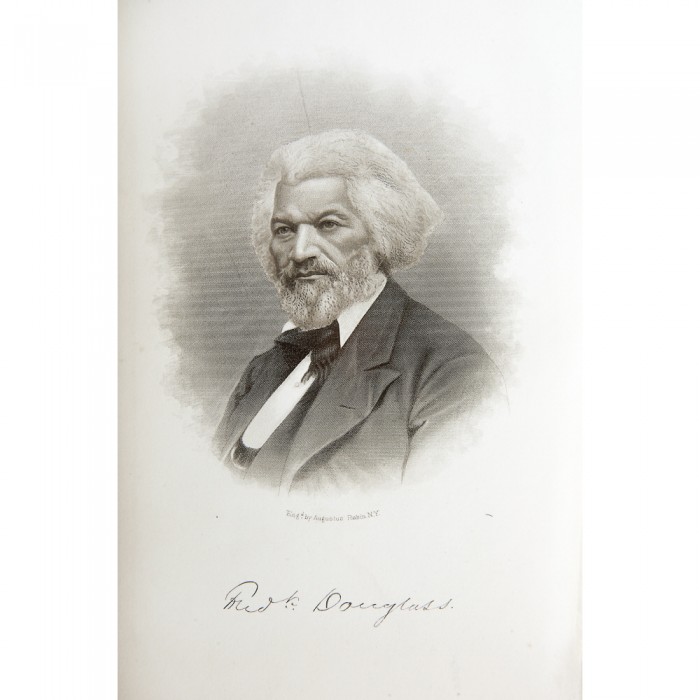Today in Smithsonian History: February 12, 1978

Fronstpiece of the “The Life and Times of Frederick Douglass, as Written by Himself,” via the Collection of 19th-Century African American Literature, Anacostia Community Museum Archives, Smithsonian Institution
February 12, 1978 “The Frederick Douglass Years” opens at the Anacostia Neighborhood Museum. The exhibition explores the life of Frederick Douglass and the times in which he lived–his years as a slave, his escape, the part he played in events leading to the Civil War, his subsequent appointments as Assistant Secretary to the Commission of Inquiry to Santo Domingo and as U.S. Marshal of the District of Columbia, and finally, as a resident of the Anacostia neighborhood of Washington, D.C.

1845 lithograph created by the E. W. Bouvé Lithography Co. from the collections of the National Portrait Gallery.

Frederick Douglass print published by Frank Leslie’s Illustrated Newspaper, ca. 1879. From the collections of the National Museum of of African American History and Culture

In 1850, as Congress considered passage of a harsh new Fugitive Slave Law, more than 2,000 people heeded the call of abolitionist Gerrit Smith (standing, center) to meet in Cazenovia, New York, and protest the impending legislation. Among the nearly fifty escaped slaves to participate were Emily and Mary Edmonson (in plaid shawls), whose freedom had been purchased by abolitionists in 1848, and Frederick Douglass (seated, center right), who served as the convention’s presiding officer. On the gathering’s second day, the overflowing crowd moved from its initial meeting place in a church to a nearby orchard. There, a local daguerreotypist made this extraordinary record of the convention. Created by Ezra Greenleaf Weld (1801 – 1874), Catalog of American Portraits, National Portrait Gallery

Frederick Douglass’ home in the Anacostia neighborhood of S.E. Washington, D.C. From the Scurlock Studio Records, ca. 1905-1994, Archives Center, National Museum of American History
Posted: 12 February 2019
- Categories:







